The blue plaque project is one that has taken hold across the UK, first in London and more recently in Oxfordshire. At Oxford we have seen a number of plaques go up marking the presence of great minds and influential thinkers. Yet the streets of Oxford are not only graced with blue commemorative plaques – the city is adorned with a number of different types of commemorative plaques, statues, and engravings.
Curious wanderers can read about the Swindelstock Tavern at the corner of St. Aldate’s and Queen Street on the base of the Santander bank which currently occupies the spot. Those who stroll down Broad Street can read the short inscription about our three Oxford Martyrs who were burnt alive, on the spot left marked with a cross in the middle of the street. More recently, a plaque has been installed at the entrance to the Codrington Library in recognition of the contribution of slave money to its construction. The controversial Rhodes statue stands tall on High Street still today, gazing down at all who walk beneath it. Despite clear declarations by Oriel College over two years’ ago about adding context to the statue, still it is left bare, unaccompanied, and unaddressed in the space it occupies. Around the corner on King Edward Street, another reminder of Rhodes’ power in Oxford exists in the form of a different plaque – showing the bust of Cecil Rhodes and declaring that the building was once his residence while he lived a short year at Oxford.
One participant on the Uncomfortable Oxford decided to find a way to engage with these uncomfortable commemorative pieces in the public space and initiated an ‘alternative’ blue plaque project of her own. Clare Crombie is a local Oxford artist and on November 30, 2018 she laid out three little blue plaques at three sites in the city, envisioning them as ‘conversation plaques’ for three figures already in place. All three bore quotes from the famous Persian poet Hafiz. Clare described these as thought pieces for a conversation in the after life – what would Rhodes himself feel if he ever met and spoke to the inspiring poet, who wrote so vividly of love?
I went with her to witness each plaque be laid out in a spot where passersby could read them. The first blue plaque was laid down in a coffee shop below the Rhodes’ plaque on King Edward Street. Negotiating the space took some time, but it was gratifying to walk away and see the curiosity on the faces of those within the café. We were sure that a few stood up after our departure to investigate.
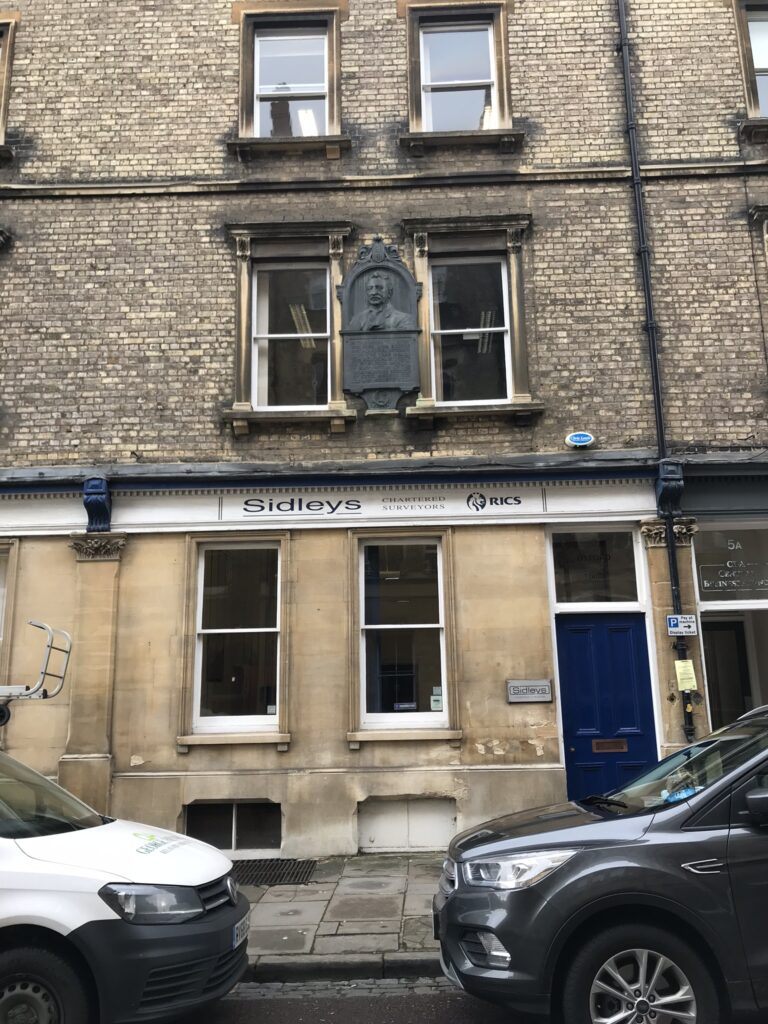
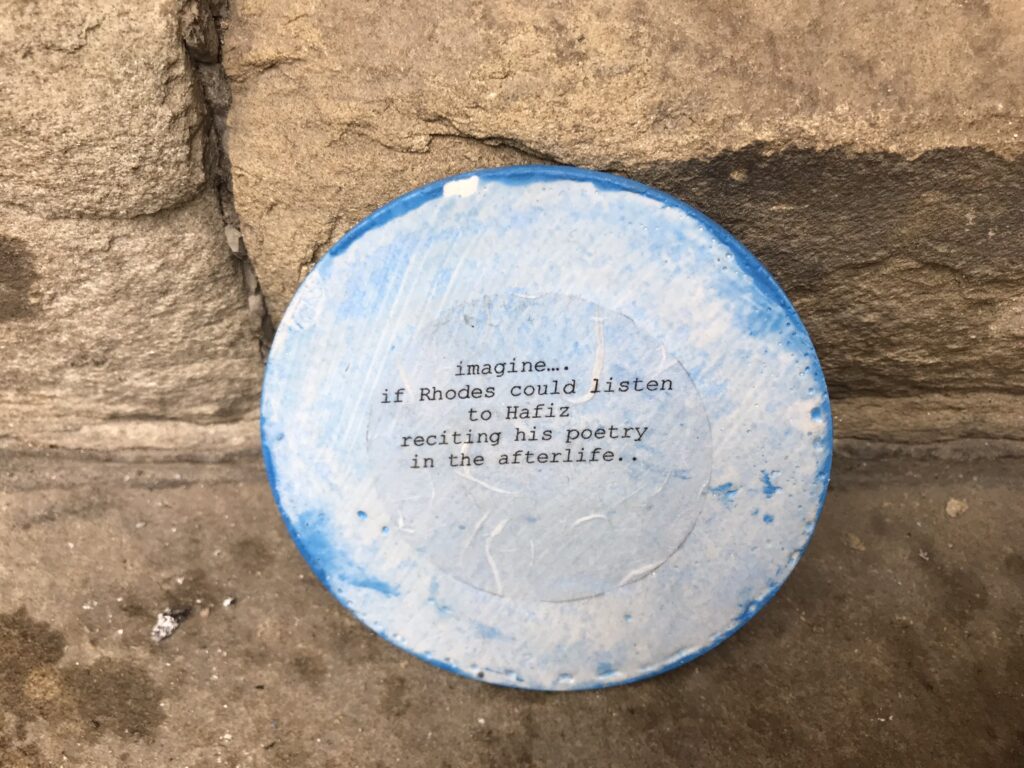
The second was laid at the Rhodes Building itself, on High street. On the top step with the quote face up, it was a striking blue against the grey of the steps below Rhodes’ feet.
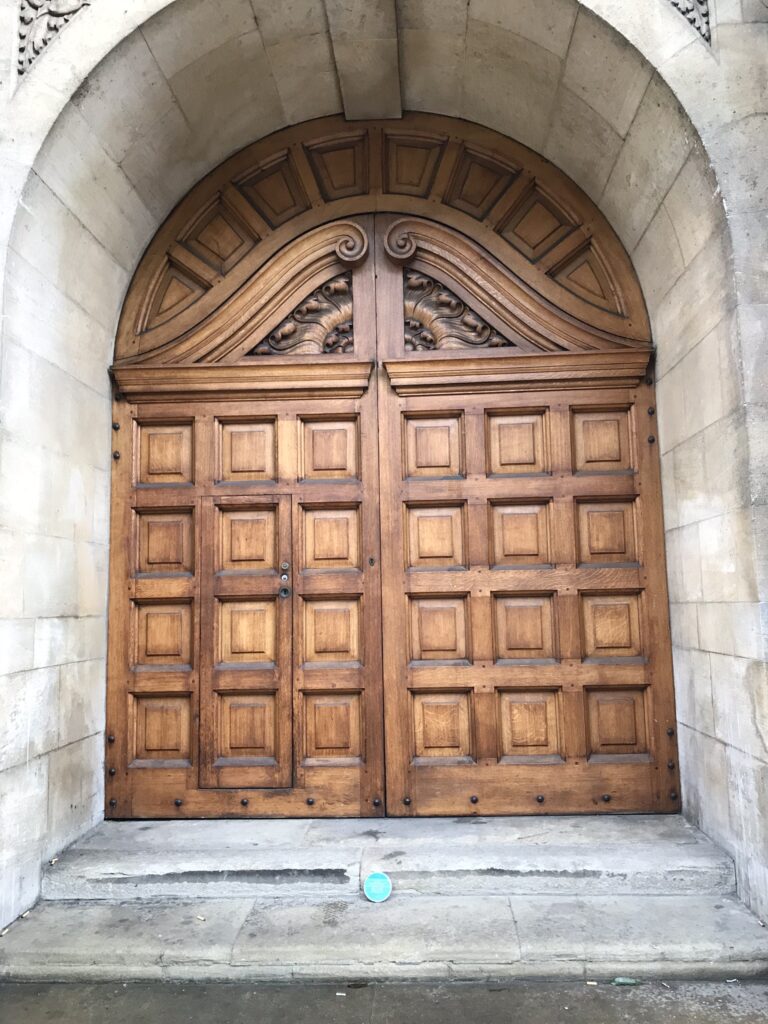
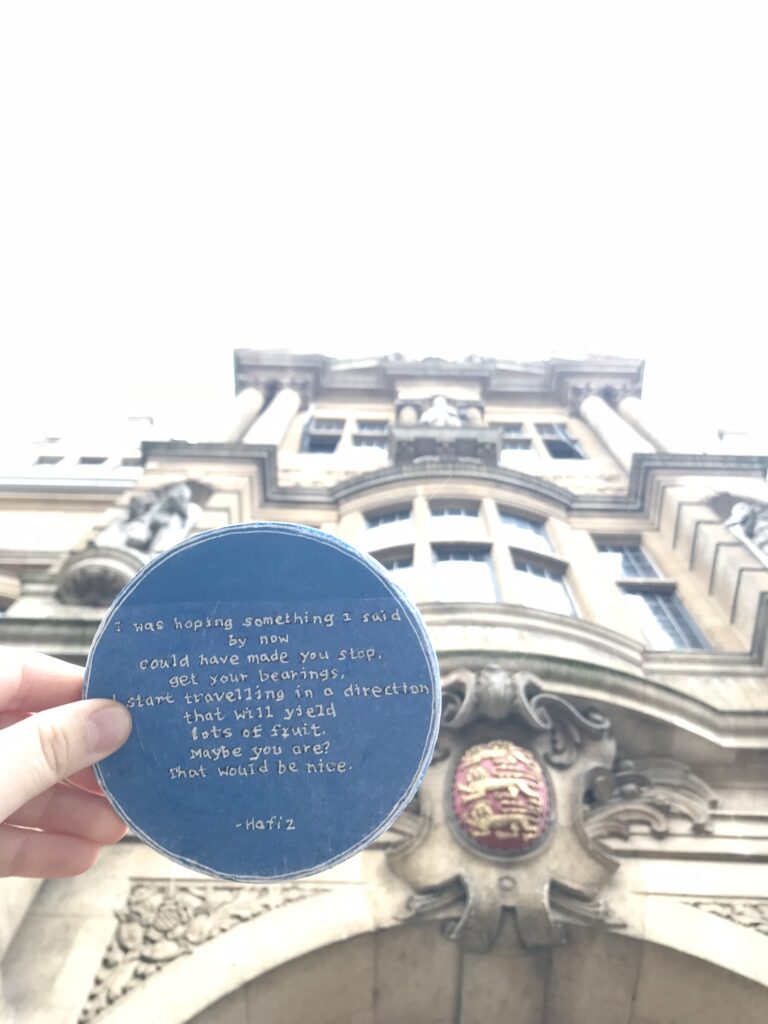
The third had a different tone, it invoked a memory of the momentous achievement of Oxford’s first Black Scholar – Christian Cole. Although Cole was a non-collegiate student while he studied at the University, he was awarded an honorary place at University College after he graduated. The College erected a shiny gold plaque to him just last year in Logic Lane. Just below the gold, Clare placed her third blue plaque.
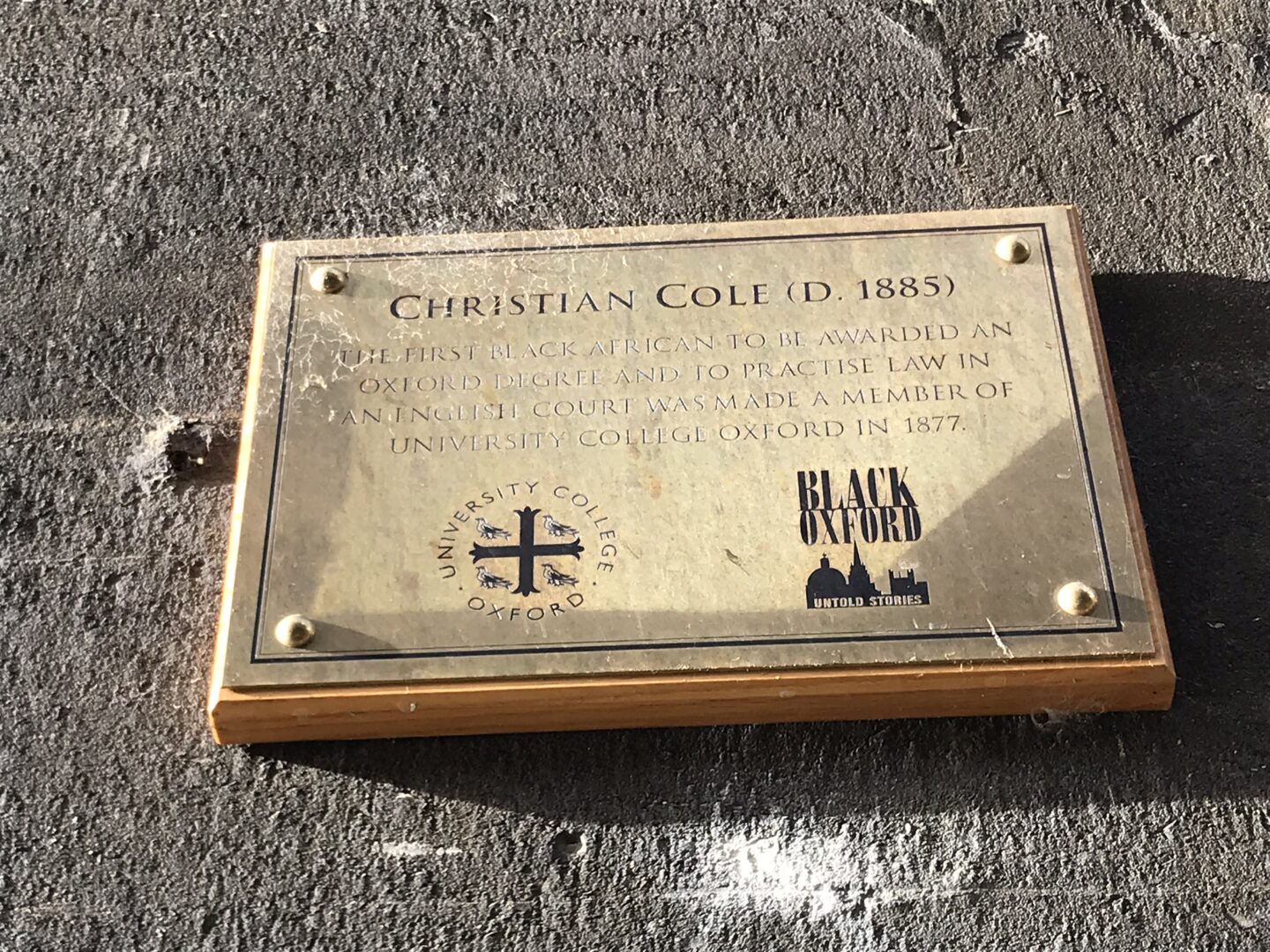
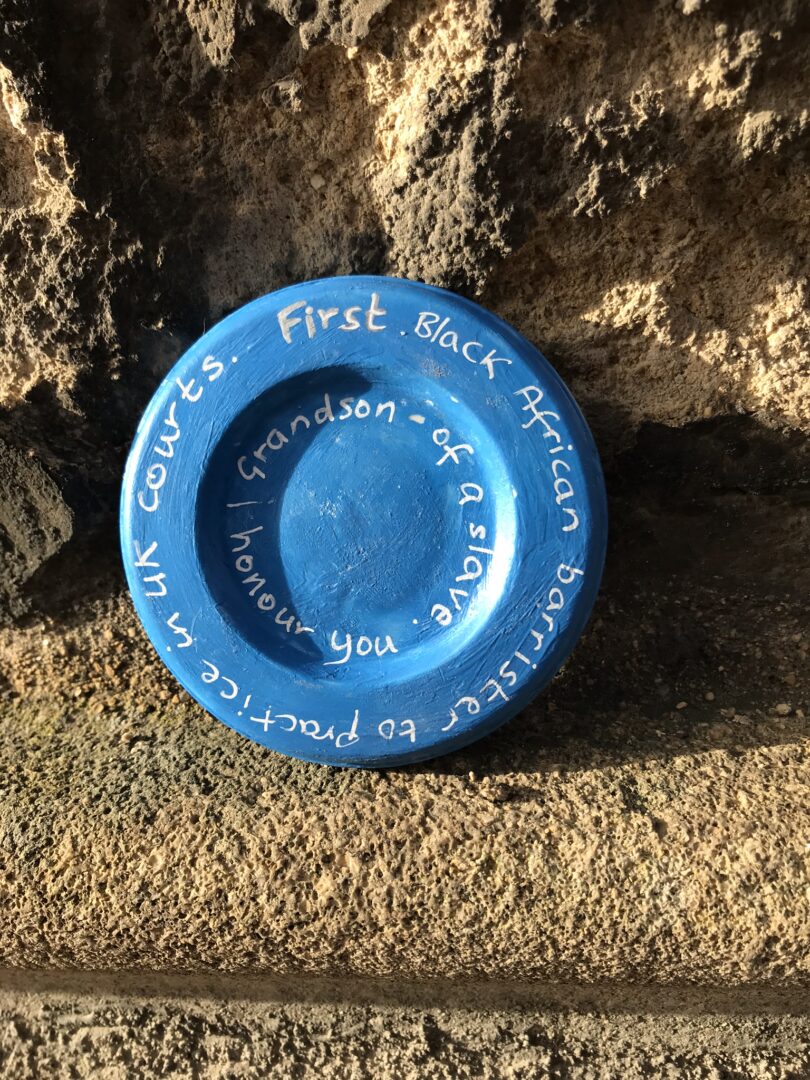
Our task completed, we walked away, knowing that the plaques likely wouldn’t last the day. The colleges would remove them when they were discovered, but we hoped that there would be a few moments of curiosity before that happened. Hopefully at least one person would stop and look at the plaques, maybe even pick them up, and make the connection between them and the other legacies in the built environment. Certainly only some of these legacies are given a voice today, but Clare introduced another voice to the streets of Oxford, if only for a moment.
We were gratified to see our first bystanders reading the plaque on the Rhodes Building as we walked away. I was curious and went back later that evening. The blue plaque had moved closer to the street, as if it was slowly migrating towards those who walked by, daring them to look.
Clare messaged me to tell me that the plaque below Rhodes’ statue was gone by the next day. But the one for Christian Cole was still in place. Interesting how celebratory plaques are acceptable, but those that recognise troubling aspects of the past are the first to be removed.
By Paula Larsson





